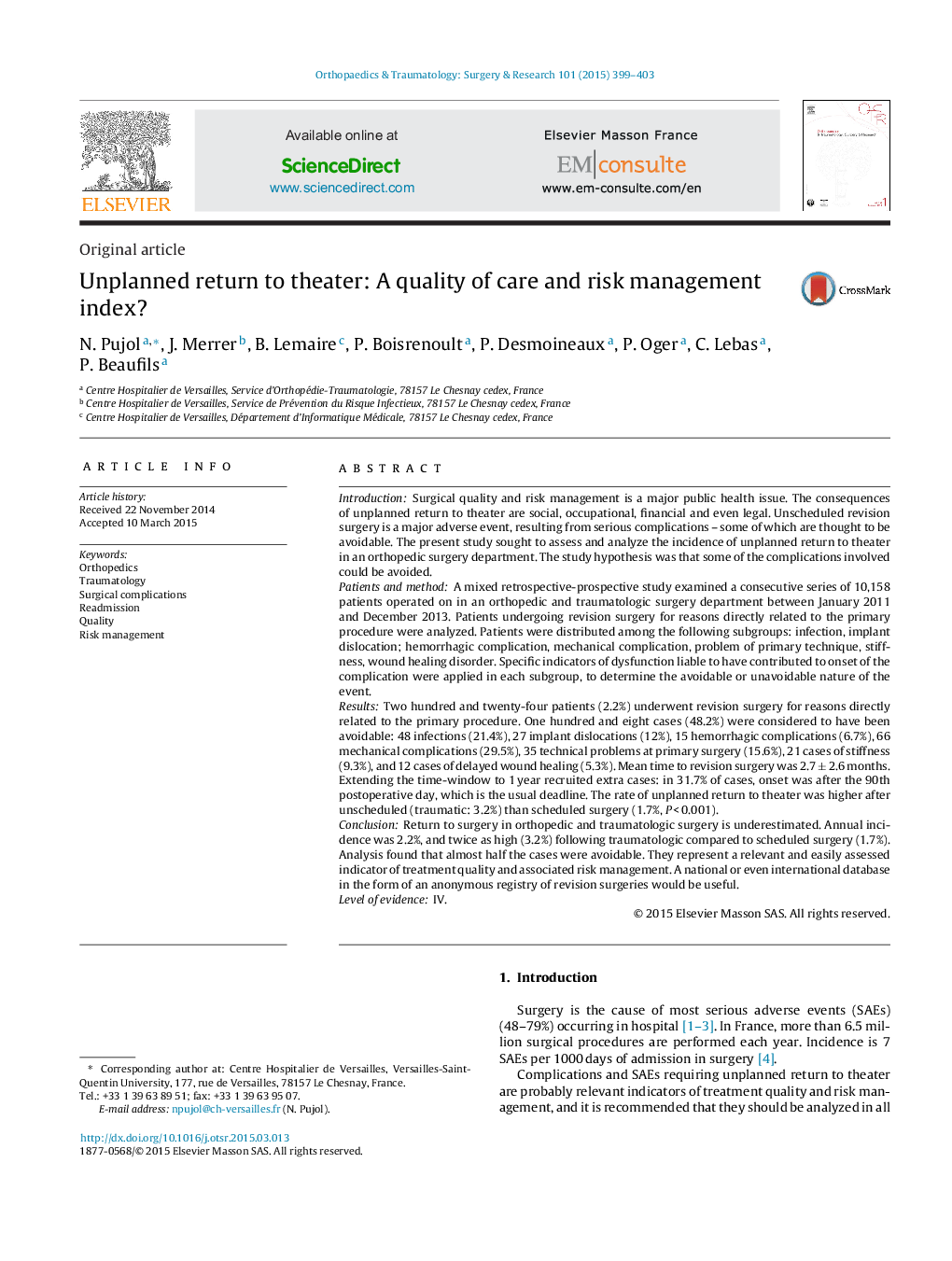| کد مقاله | کد نشریه | سال انتشار | مقاله انگلیسی | نسخه تمام متن |
|---|---|---|---|---|
| 4081067 | 1267578 | 2015 | 5 صفحه PDF | دانلود رایگان |
IntroductionSurgical quality and risk management is a major public health issue. The consequences of unplanned return to theater are social, occupational, financial and even legal. Unscheduled revision surgery is a major adverse event, resulting from serious complications – some of which are thought to be avoidable. The present study sought to assess and analyze the incidence of unplanned return to theater in an orthopedic surgery department. The study hypothesis was that some of the complications involved could be avoided.Patients and methodA mixed retrospective-prospective study examined a consecutive series of 10,158 patients operated on in an orthopedic and traumatologic surgery department between January 2011 and December 2013. Patients undergoing revision surgery for reasons directly related to the primary procedure were analyzed. Patients were distributed among the following subgroups: infection, implant dislocation; hemorrhagic complication, mechanical complication, problem of primary technique, stiffness, wound healing disorder. Specific indicators of dysfunction liable to have contributed to onset of the complication were applied in each subgroup, to determine the avoidable or unavoidable nature of the event.ResultsTwo hundred and twenty-four patients (2.2%) underwent revision surgery for reasons directly related to the primary procedure. One hundred and eight cases (48.2%) were considered to have been avoidable: 48 infections (21.4%), 27 implant dislocations (12%), 15 hemorrhagic complications (6.7%), 66 mechanical complications (29.5%), 35 technical problems at primary surgery (15.6%), 21 cases of stiffness (9.3%), and 12 cases of delayed wound healing (5.3%). Mean time to revision surgery was 2.7 ± 2.6 months. Extending the time-window to 1 year recruited extra cases: in 31.7% of cases, onset was after the 90th postoperative day, which is the usual deadline. The rate of unplanned return to theater was higher after unscheduled (traumatic: 3.2%) than scheduled surgery (1.7%, P < 0.001).ConclusionReturn to surgery in orthopedic and traumatologic surgery is underestimated. Annual incidence was 2.2%, and twice as high (3.2%) following traumatologic compared to scheduled surgery (1.7%). Analysis found that almost half the cases were avoidable. They represent a relevant and easily assessed indicator of treatment quality and associated risk management. A national or even international database in the form of an anonymous registry of revision surgeries would be useful.Level of evidenceIV.
Journal: Orthopaedics & Traumatology: Surgery & Research - Volume 101, Issue 4, June 2015, Pages 399–403
